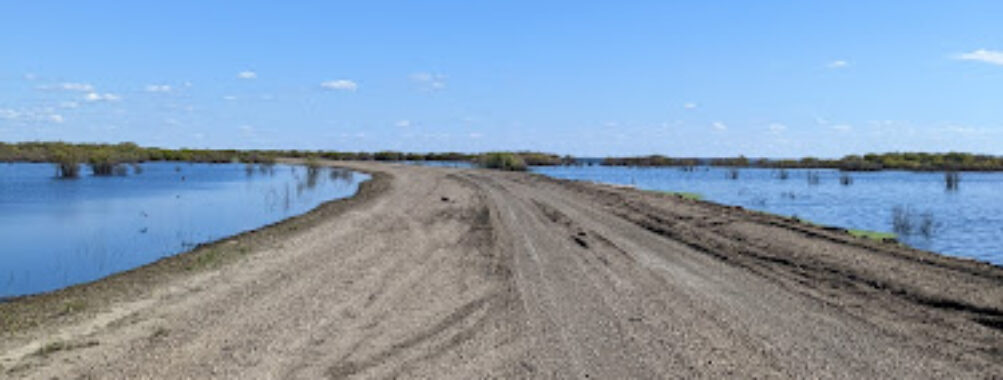
Hay-Zama Lakes Wildland Provincial Park
Table of Contents
Description
Hay-Zama Lakes Wildland Provincial Park is one of those rare places that makes you slow down, breathe a little deeper, and just take it all in. Tucked away in northwestern Alberta, this 48,600-hectare wetland complex is a wonderland of shallow lakes, winding waterways, and sprawling floodplains. It’s not the kind of park where you’ll find paved trails and bustling visitor centers—this is a wild, untamed corner of the province where nature calls the shots. And honestly, that’s the charm.
It’s a designated Ramsar wetland of international importance, which basically means it’s a big deal for birds and other wildlife. Migratory waterfowl flock here in huge numbers, and if you’re lucky, you might spot everything from trumpeter swans to sandhill cranes. The park’s remote location keeps it peaceful—there’s a good chance you’ll have entire stretches of shoreline all to yourself. I remember the first time I visited, I sat on a driftwood log for nearly an hour and didn’t hear a single engine, just the wind and the occasional splash of a fish.
It’s not without its challenges, though. In wet years, large parts of the park can be underwater, making camping and hiking a bit of an adventure. But if you’re the type who sees that as part of the fun, you’ll find it incredibly rewarding. It’s also dog-friendly, so your four-legged travel buddy can join in on the exploration. And yes, kids can have a blast here too—just be prepared to keep a close eye on them near the water.
Key Features
- 586 square kilometers of protected wetland and wildland habitat
- Ramsar-designated site and Important Bird Area for migratory species
- Rich wildlife viewing opportunities, including moose, beavers, and countless bird species
- Random camping permitted—no designated campgrounds
- Popular fishing spots with northern pike, walleye, and whitefish
- Limited road access, enhancing the remote and quiet atmosphere
- Seasonal flooding creates unique, ever-changing landscapes
Best Time to Visit
Timing is everything here. Late spring to early fall is generally the sweet spot, especially if you want to catch the peak of bird migration. May and June bring an explosion of birdlife, while late summer offers warmer weather and better chances for fishing. That said, early spring can be magical too—there’s something about seeing ice breaking up on the lakes and hearing the first calls of returning waterfowl that sticks with you.
One thing to keep in mind: in particularly wet years, parts of the park can be inaccessible, so it’s worth checking recent conditions before heading out. Winter visits are possible but not common, and they require serious preparation—think snowshoes, layers, and a knack for navigating in remote, icy terrain.
How to Get There
Reaching Hay-Zama Lakes isn’t as simple as plugging it into your GPS and cruising down a highway. The park has limited road access, and depending on the season, some routes can be muddy or even washed out. Most visitors approach from nearby communities like High Level or Fort Vermilion, then take smaller roads toward the park boundary.
Because it’s remote, fuel up before you leave town, and bring supplies—you won’t find shops or gas stations once you’re out there. And if you’re traveling in spring or after heavy rains, a high-clearance vehicle can make all the difference. I’ve seen more than one sedan get stuck in the muck out here.
Tips for Visiting
First and foremost, embrace the wild. This isn’t a manicured park with boardwalks and coffee kiosks; it’s raw wilderness. Bring waterproof boots or waders if you plan to explore beyond the main access points—trust me, your feet will thank you later. Bug spray is a must in summer, and so is sun protection, even on overcast days.
If you’re camping, remember it’s random camping only, so you’ll need to be self-sufficient. Pack in everything you need and pack out everything you bring—there are no garbage facilities. A portable water filter can be a lifesaver if you don’t want to haul all your drinking water in.
Wildlife here is abundant, and that’s part of the magic. But it also means you need to be respectful and cautious. Keep a safe distance from animals, especially during nesting or calving seasons. And if you’re fishing, make sure you’re familiar with local regulations to help preserve the ecosystem for future visitors.
Lastly, don’t rush. Give yourself time to sit quietly and watch the landscape change as the light shifts. Some of my favorite moments here have been the slow ones—watching a beaver glide across the water at dusk, or hearing the distant call of a loon echoing across the lake. It’s those little things that make Hay-Zama Lakes stick in your memory long after you’ve left.
Location
Places to Stay Near Hay-Zama Lakes Wildland Provincial Park
Find and Book a Tour
Explore More Travel Guides
No reviews found! Be the first to review!